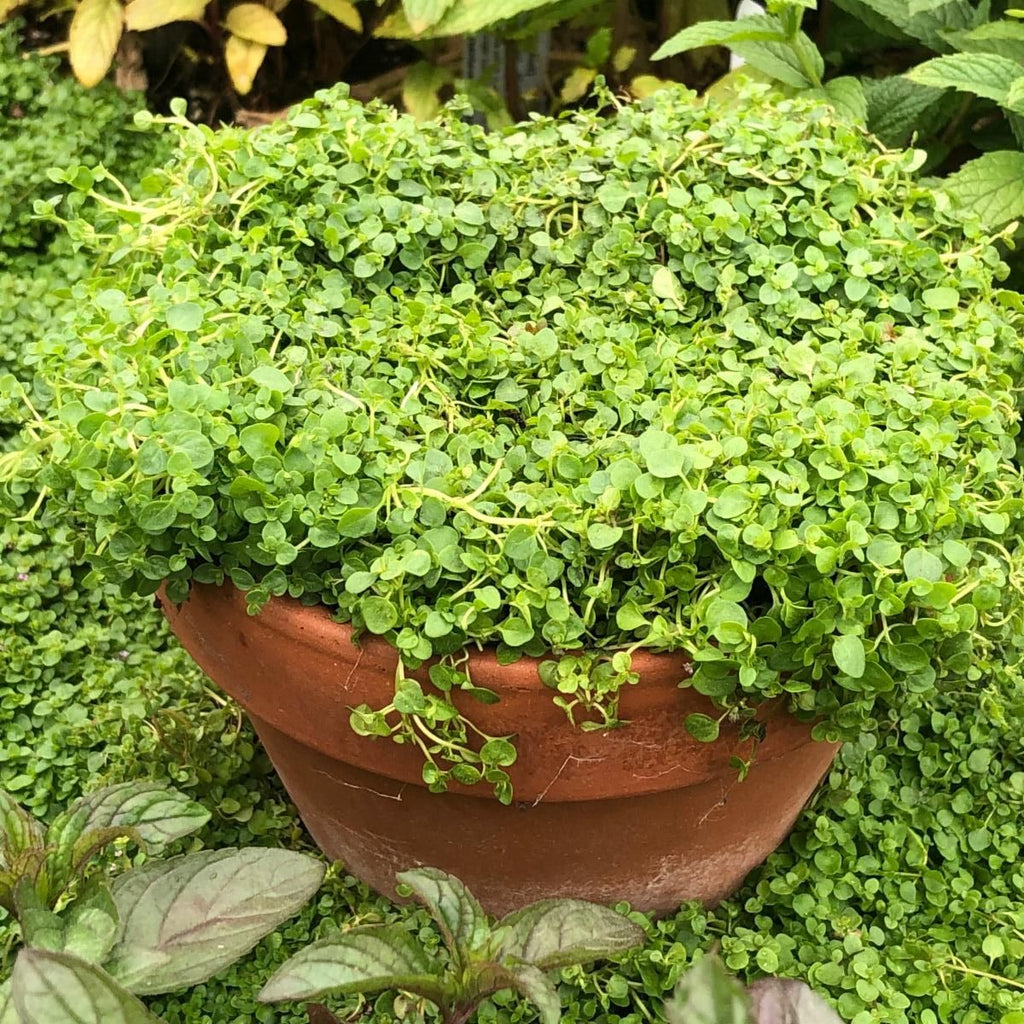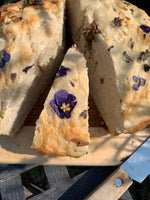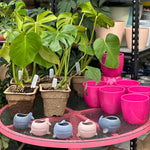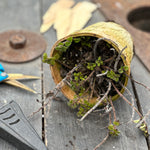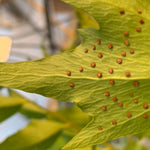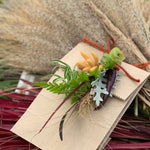Corsican mint Zen garden
Okay, simplicity can be a really cool theme! A favourite one-herb garden that I love to make uses the unique, tiny-leafed mint called Corsican mint. It grows almost like moss, creating an invitingly soft and hugely aromatic carpet that spreads quickly in a pot. The leaves are peppermint scented and feel wonderful when you brush your fingers across them. Corsican mint looks amazing when allowed to fill out a low bowl planter, with the carpet of green creating a soft edge as it gradually spills over. In late summer, tiny purple-pink flowers add sparkle to the green. Adding a few simple accents (maybe crystals or mineral stones) can complete this satisfyingly minimalist theme.

Up-side-down tomato & herb planter
This is such an easy, super fun way to grow both herbs and veggies together in one small space! All that is required is a simple hanging basket pot, a compact or vining cherry tomato and a few favourite herbs (or edible flowers, strawberries or simply beautiful annuals). The tomato will happily grow up-side-down, and the other plants up top - creating an eye-catching and space-wise planting technique. To make it work, start by cutting out a larger hole in the bottom of the basket (large enough to just fit the tomato through), insert the tomato through the hole, working from the basket out through the bottom, and then add soil above the tomato so you can plant your herbs or other desired plants.
We use a blend of organic 65% potting mix and 35% Sea Soil for this type of planter and always top-dress with organic Garden Straw to reduce moisture loss.
A couple of additional tips: since you'll have a tomato out the bottom while you plant the top, it is easier if you can hang the pot while you work, and Red Profusion, Topsy Tom and Rapunzel are among the top picks for tomatoes well-suited to up-side-down planters.

Potted butterfly host-plant garden
Even if you don't have an in-ground garden (or have run out of room!), you can still plant a beautiful potted garden full of butterfly host plants. The two easiest themes are milkweed for Monarchs or dill, parsley and rue for Swallowtail butterflies.
Butterflies are very specific about which plants they lay eggs on, with caterpillars later emerging to eat these specific plants (and only these specific plants). In the case of Monarchs, all types of milkweed will do but the fragrant Swamp Milkweed (two wonderful cultivars are Soulmate and Ice Ballet), orange-flowering Butterflyweed (Asclepias tuberosa) and the cheekily-named Hairy Balls milkweed (Asclepias physocarpa) are fast-growing and look full in pots. The perennial types can be planted into your in-ground garden at the end of the season, or treated as annuals (there are not likely to survive if left outdoors in the planters).

Swallowtails (caterpillar pictured above, on pasrsley) are hosted on all plants from the carrot family, but the most popular for hosting in planters are the easy-to-grow herbs dill, parsley and rue. When we planted our own Swallowtail host planter today there was a visit from a beautiful Black Swallowtail within minutes!
Adding some nectar plants like ageratum, flowering sages, Thai basil, fuchsia, or heliotrope elevates the look of the planter, and also provides important nectar for the adult butterflies (and other pollinators)!

Summer-friendly salad bowl
I love it when something so easy delivers a big return! In this case, a single pack of seeds will grow one to two 12" bowls of tasty summer salad greens and all you need to do is prep the pot with composty soil, scatter the seeds and water.
The one thing to consider is that some lettuces work better than others during the hot months, so look for selections such as Fruition Summer Blend, Les Oreilles du diable, Anuenue, Capitan Bibb, De Morges Braun, Merveille des Quatres Saisons and Two Star.
When growing lettuce in a salad bowl, you'll get a quick harvest if you plant densely (1/2 to full pack per 12" - 16" lettuce bowl) and harvest as baby greens... but you could grow the summer tolerant lettuces to a full size too (thin the lettuces down so heads can develop!)

Bonsai-style rosemary project
Some plants come loaded with character, and rosemary is a prime example. The best types of rosemary for a quick, wise-looking bonsai style are creeping ones such as Lockwood de Forest and Blue Rain, Foxtail and Majorca Pink, which allow you to develop long draping stems while exposing the interesting bark on the main trunk. While bonsai often take years to create you can achieve good-looking rosemary in bonsai-style in just a few months. And these look so good on the summer patio table!
The photo above shows what the rosemary looked like before and after styling! Thanks to our staff-member, William, for creating this and the butterfly planters mentioned above!
If you winter your rosemary indoors, the creeping styles are also the most l likely to delight you with winter flowers.
Scented geraniums like Attar of Roses and Frensham Lemon also look sharp as potted herbal bonsai.

